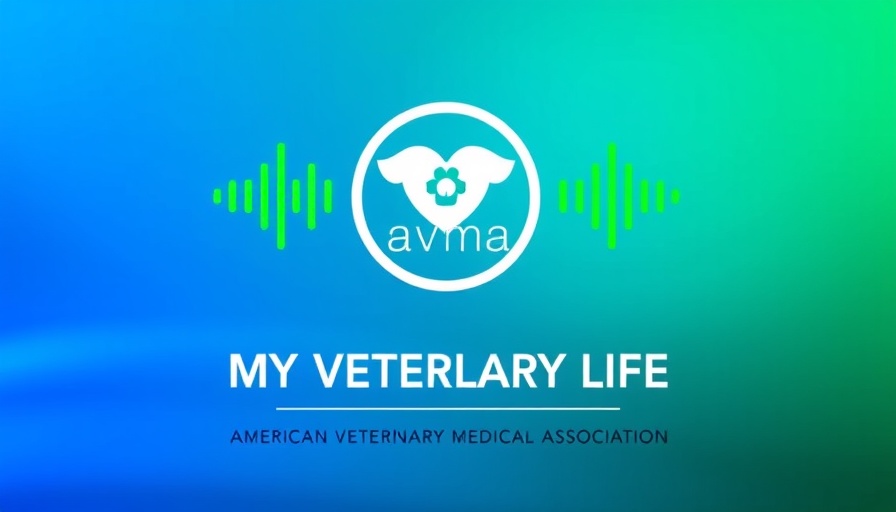
Leading from Where You Are: A Journey of Empowerment
Alyssa Mages has risen to prominence in the veterinary profession not merely as a skilled technician but as a beacon of leadership and empowerment within the industry. In her recent podcast session on My Veterinary Life, Alyssa opens up about her multifaceted career and the significance of embracing leadership at all levels, a conversation that resonates particularly with pet healthcare professionals, trainers, groomers, and veterinary enthusiasts alike.
Understanding Leadership in Veterinary Medicine
It's not uncommon for many professionals in the veterinary field, regardless of their background, to find themselves in leadership roles unexpectedly. As Alyssa notes, the sessions titled "Leading from Where You Are" aim to illuminate the importance of leadership from any position—whether you’re a seasoned veterinarian or just starting your career. Alyssa emphasizes that leadership isn’t limited to those in formal roles, but encompasses everyone who influences their workplace culture.
Importance of Continual Learning and Adaptability
The veterinary profession is one of continuous learning, and for those moving into leadership roles, the journey often involves adapting one’s skills from technical knowledge to interpersonal communication. In her reflections from the podcast, Alyssa shares the critical lessons she gleaned from her journey—from marine biology to becoming a certified veterinary technician and then stepping into various leadership roles. These experiences have equipped her with the insights to share practical advice on how to manage and lead effectively.
Veterinary Leadership: Navigating Challenges Together
The transition from technical roles to leadership brings its own set of challenges. Many professionals often find themselves grappling with their new responsibilities, feeling unprepared to lead their teams. Alyssa's story serves as encouragement for these individuals, stressing the value of seeking mentorship, participating in workshops, and leaning into one’s community. By cultivating a supportive network, individuals can share their experiences and enhance their skills collaboratively.
Pursuing Education Beyond Veterinary Borders
One of the most compelling points in Alyssa’s narrative is her advocacy for education outside of veterinary medicine. Attending workshops that teach leadership skills applicable across various industries, such as communication skills from non-veterinary experts, can yield significant benefits. This approach not only enriches the veterinary team’s skill set but provides diverse perspectives that can transform practice culture.
Promoting Inclusivity and Mental Health
Alyssa is also deeply passionate about promoting mental health within the veterinary profession. Through her work with various initiatives, including her co-founded nonprofit focused on mental health support, she illustrates how leaders can prioritize the well-being of their teams. This aspect is not just about looking after patients; it extends to creating an environment where team members feel valued and supported.
Empowering Others to Lead
As Alyssa’s story unfolds, it’s clear that her journey is not just about personal achievements; it’s about encouraging others in veterinary fields to take charge of their leadership journeys too. She inspires fellow practitioners to be vulnerable in their roles, to express when they need help, and to foster a collaborative atmosphere. Importantly, she advocates for a culture of growth, urging teams to embrace continuous learning.
Take Action and Embrace Your Leadership Path
If you’re inspired by Alyssa Mages’ story and want to deepen your grip on veterinary leadership, consider seeking out workshops, reading leading literature on the subject, or even joining discussions in local or online communities. It’s also invaluable to initiate dialogues with colleagues about their perspectives on leadership in veterinary settings and share your own insights in return.
Through collective efforts and shared stories, we can make significant strides in fostering a more empowered and effective veterinary community. Explore new educational opportunities today—your future selves will thank you!
Join the Movement of Empowered Veterinary Leaders
As we continue to explore leadership within veterinary medicine, we invite you to share your thoughts and journey. Your willingness to lead, learn, and collaborate can help reshape the industry, ensuring a brighter future for both veterinary professionals and the pets we serve.
 Add Row
Add Row  Add
Add 


Write A Comment